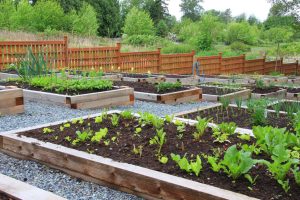Americans turned to sustainability when the pandemic hit. They’ve learned to garden and grow their produce in their garden. About 77% of households are now gardening to sustain themselves and make their backyard look much more attractive.
If you’re interested in becoming more self-reliant, one of the best things you can do is start growing your produce. Not only will you save money on groceries, but you’ll also have access to fresh, organic fruits and vegetables all year round. It can also keep you from the COVID-19 virus because you never have to go grocery shopping again.
There are a lot of different ways to grow fruits and vegetables. You can start with a simple container garden on your balcony or deck or opt for a more complex in-ground garden. No matter what type of garden you choose, there are a few things you need to keep in mind to ensure that your plants thrive. The very first thing is using the right soil.
Soil
Soil is the most important thing for your plants. If you use poor-quality soil, your plants will not be able to absorb the nutrients they need to grow. You can buy the potting mix from a gardening store or make your own by composting kitchen and yard waste. However, the best kind of soil is loam soil.
Loam soil has a mixture of sand, silt, and clay. This soil is easy for plants to root in and holds moisture well. If you live in an area with sandy soil, you can add compost or other organic matter to help improve the texture.

Choose the Right Location
The right location of your plants can determine how much sunlight they can get. In addition, certain vegetables require more or less sunlight than others. For example, tomatoes need at least six hours of sunlight per day, while leafy greens like spinach only need two to three hours.
Be sure to check the amount of sunlight your plants need before you choose a spot in your garden. Once you’ve found the perfect location, it’s time to start planting!
Watering Your Plants
One of the most important things you need to do for your plants is water them regularly. Depending on the type of plant, they may need to be watered every day or every other day. Be sure to check the soil before watering to see if it’s dry. If it is, give your plant a good soaking. However, too much water can also harm plants, so be careful not to overwater them.
Fertilizing Your Plants
Another essential thing to do for your plants is to fertilize them. It will help them grow strong and healthy. There are many different ways to fertilize plants, but the best way is to use organic compost. You can buy it from a gardening store or make your own by composting kitchen and yard waste.
Making organic compost is relatively easy once you get used to it. First, you need a good mix of green and brown materials. Green materials are nitrogen-rich and include things like grass clippings, vegetable scraps, and coffee grounds. Brown materials are high in carbon and have something like dead leaves, twigs, and cardboard.
You also need a container to store your compost in. It can be anything from an old trash can to a plastic bin. Once you have all your materials, mix them in a ratio of 3:1 (three parts brown to one part green). Be sure to turn your compost every few weeks to aerate it and help it break down faster.
After a few months, your compost will be ready to use. Simply spread it around the base of your plants and water it well.
Invest in a Greenhouse
Investing in a greenhouse might be one of the best investments you’ll ever make for your garden, especially if you live in colder climates. A greenhouse suitable for cold climates can ensure that you can grow all sorts of products such as tomatoes, cucumbers, and peppers year-round.
A greenhouse is something to consider if you’re serious about gardening. They range in price and size so that you can find one perfect for your needs. Moreover, you still need to prepare the greenhouse yourself, so make sure you look into what you need when growing plants that you don’t know much about.
Gardening can be a great way to provide yourself with fresh produce. By following these tips, you can be sure that your plants will thrive. Soon, you’ll be enjoying the fruits (and vegetables) of your labor!












